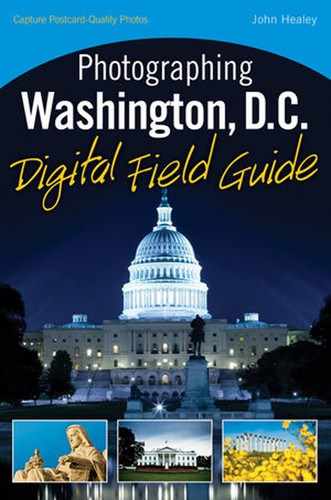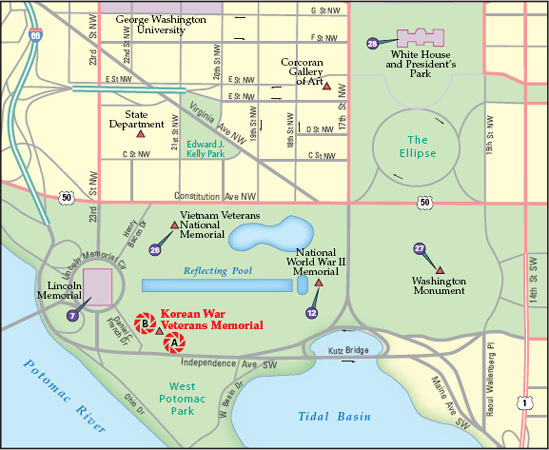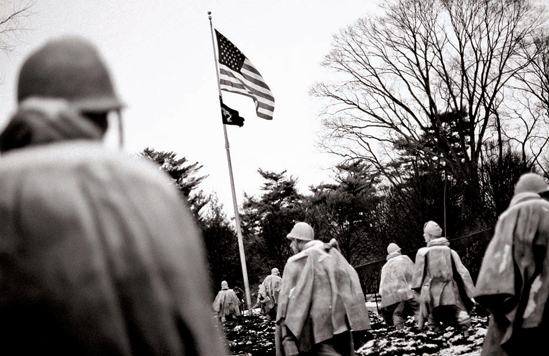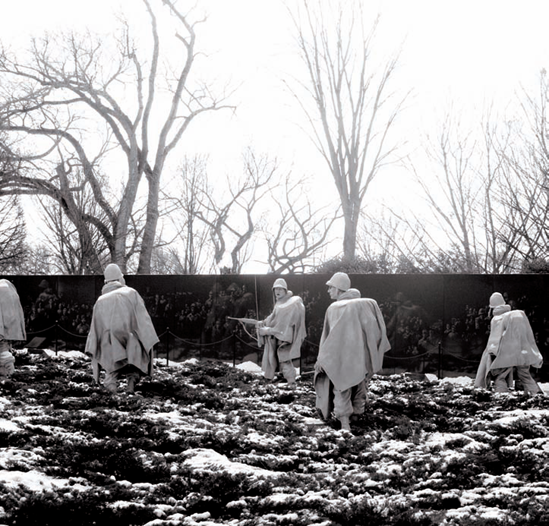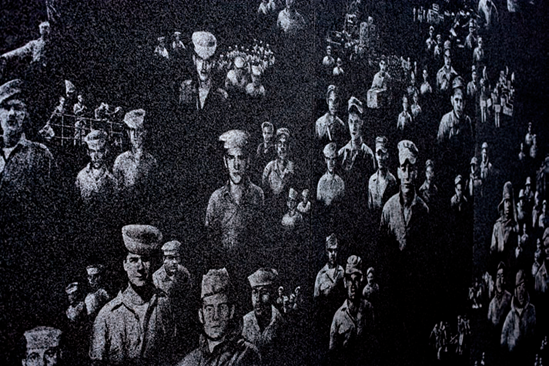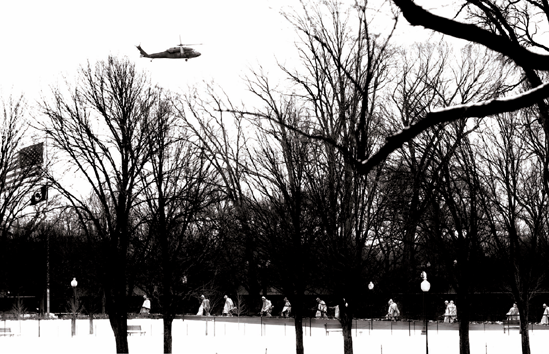
The Korean War Veterans Memorial on a snowy day. Taken at ISO 640, f/4, 1/400 second with a 180mm lens.
The Korean War Veterans Memorial honors members of the United States Armed Forces who served in the Korean War, especially those who were killed in action, are still missing in action, or were held as prisoners of war. The memorial was dedicated in 1994 by President Bill Clinton with South Korean President Kim Young Sam.
The memorial consists of 19 stainless-steel statues, depicting soldiers from the Army, Marines, Navy, and Air Force on patrol during the Korean War. Next to the statues is the Mural Wall, a 164-foot-long mural that has some 2,400 photographs of the Korean War from the National Archives. The reflective nature of the wall is also meant to double the number of soldiers to 38, which is symbolic of the 38th parallel as well as the number of months that the conflict lasted.
The Korean War Veterans Memorial is along the west end of the National Mall, southeast of the Lincoln Memorial.
A prime view of the Korean War Veterans Memorial is next to the U.S. Flag, placed at the front of the formation of troops on patrol. From here, you can photograph the memorial a variety of ways. When viewed from this direction, the soldiers appear to be coming from out of the dark woods which creates the feeling that there could be more soldiers within the woods. Another interesting image can be made from behind the statues, giving the viewer a feeling of being with the group of soldiers (see Figure 6.1).
The Mural Wall, designed by Louis Nelson, is covered with images from the National Archives of the Korean War, and it's a fascinating sight to see so many faces from the conflict (see figures 6.2 and 6.3). The wall is organized by Army, Navy, Marine Corps, Air Force, and Coast Guard and depicts the various roles of each armed force. Note, too, that the people pictured on the wall are facing the statues of the troops.
When faced with a scene that has many elements, try to show parts of the whole to make a strong photograph, rather than attempt to capture it all in one picture.
The Korean War Veterans Memorial is a starkly straightforward memorial, but you can photograph it in a number of ways.
For the image from the U.S. Flag looking west or from the opposite side looking east (refer to Figure 6.1), use a moderately long focal-length lens (70mm or longer) to compress some of the statues together. Some images can be made with wider lenses as well. The best lens to use depends on your composition and what ideas you have.
A polarizing filter works very well on the Mural Wall (refer to Figure 6.3) to remove any reflections cast by other visitors (of which there may be a lot).
When shooting from the U.S. Flag (refer to Figure 6.1), set your camera to Aperture Priority mode and set a low aperture value of between f/4 to f/5.6. Doing so helps to provide a limited depth of field and, depending on where you focus, enhances the strength of your image by blurring out anything extraneous in the background.
The manageable size and clean appearance of this memorial make photographing it a rather straightforward endeavor, as compared to some of the other memorials that require more time and exploration.
You can photograph here at almost any time during the day, because it is always accessible. I recommend shooting earlier in the day so that you can get a clean view without many other visitors.
Because the statues are wearing rain ponchos, it seems right to photograph here in overcast, wet conditions. If you're lucky enough to be here during fog or snow, that weather will only enhance your photo.
Nighttime shots here are possible, but the kind of lighting directed on the statues is very contrasty and also not very consistent from statue to statue — both in color and in strength. If you are going to be at the memorial at night, there are certainly opportunities, but it will be more of a challenge than during daylight hours.
Try turning your flash off and look for compositions that use a well-lit statue in the foreground and a few others in the background to give the image a sense of space.
You may try for a photo of the statues reflected in the Mural Wall. However, capturing an image that conveys both the statues and the photographs on the Mural Wall in a way that reads well can be difficult depending on the lighting. Look for reflections of the statues in the Mural Wall from various angles, and use the actual statues in the foreground of the photo.
You can find several areas where the numbers of casualties are given as well as the memorial's "Freedom is not free" quote. People often leave wreaths next to this quote — another possible photo opportunity.
